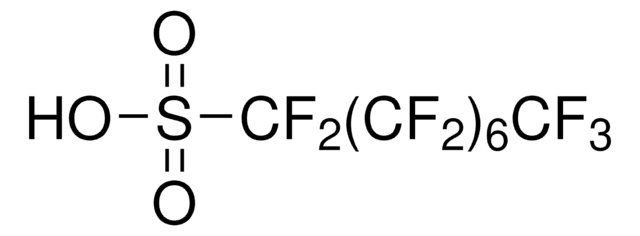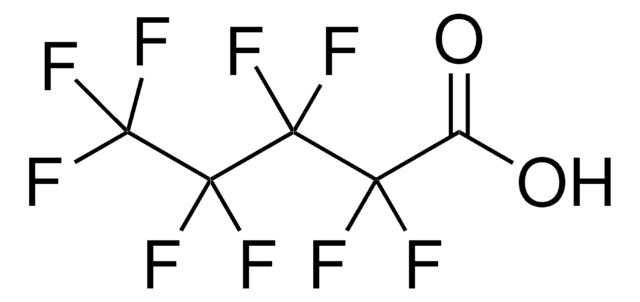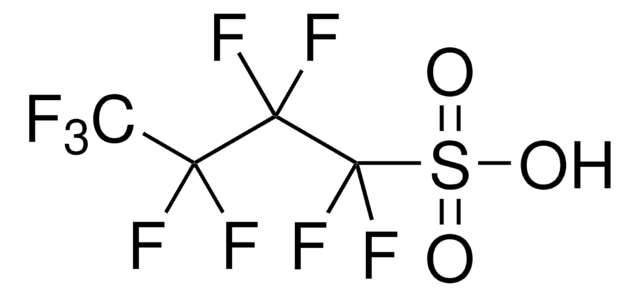Key Documents
177741
Perfluorodecanoic acid
98%
Synonim(y):
Nonadecafluorodecanoic acid, Nonadecafluorocapric acid, Perfluorocapric acid, Perfluorodecanoic acid
About This Item
Polecane produkty
ciśnienie pary
~10 mmHg ( 0 °C)
Próba
98%
tw
218 °C/740 mmHg (lit.)
mp
77-81 °C (lit.)
rozpuszczalność
methanol: soluble 10%, clear to very slightly hazy, colorless to faintly yellow
grupa funkcyjna
carboxylic acid
ciąg SMILES
OC(=O)C(F)(F)C(F)(F)C(F)(F)C(F)(F)C(F)(F)C(F)(F)C(F)(F)C(F)(F)C(F)(F)F
InChI
1S/C10HF19O2/c11-2(12,1(30)31)3(13,14)4(15,16)5(17,18)6(19,20)7(21,22)8(23,24)9(25,26)10(27,28)29/h(H,30,31)
Klucz InChI
PCIUEQPBYFRTEM-UHFFFAOYSA-N
Szukasz podobnych produktów? Odwiedź Przewodnik dotyczący porównywania produktów
Opis ogólny
Zastosowanie
Hasło ostrzegawcze
Danger
Zwroty wskazujące rodzaj zagrożenia
Zwroty wskazujące środki ostrożności
Klasyfikacja zagrożeń
Acute Tox. 3 Oral - Carc. 2 - Lact. - Repr. 1B
Kod klasy składowania
6.1C - Combustible acute toxic Cat.3 / toxic compounds or compounds which causing chronic effects
Klasa zagrożenia wodnego (WGK)
WGK 3
Temperatura zapłonu (°F)
Not applicable
Temperatura zapłonu (°C)
Not applicable
Środki ochrony indywidualnej
Eyeshields, Faceshields, Gloves, type P2 (EN 143) respirator cartridges
Wybierz jedną z najnowszych wersji:
Masz już ten produkt?
Dokumenty związane z niedawno zakupionymi produktami zostały zamieszczone w Bibliotece dokumentów.
Klienci oglądali również te produkty
Nasz zespół naukowców ma doświadczenie we wszystkich obszarach badań, w tym w naukach przyrodniczych, materiałoznawstwie, syntezie chemicznej, chromatografii, analityce i wielu innych dziedzinach.
Skontaktuj się z zespołem ds. pomocy technicznej











